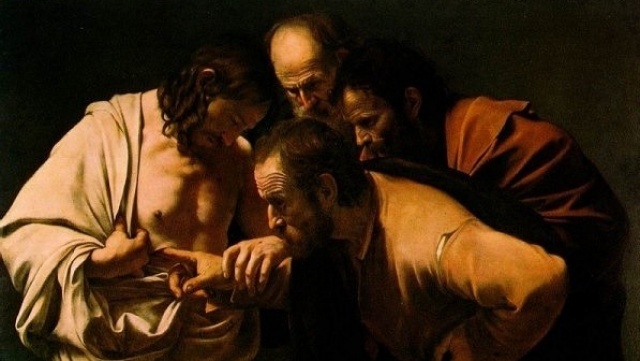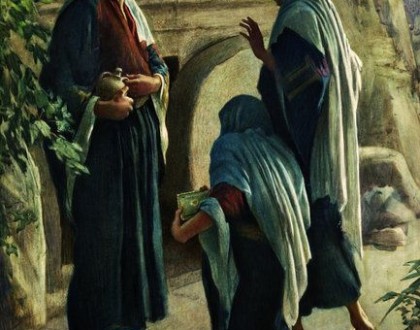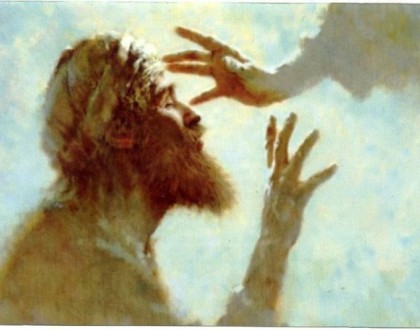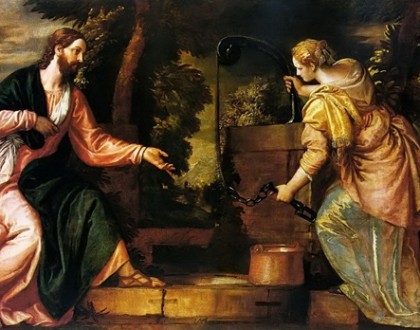Second Sunday of Easter, Year B – Sunday, April 22, 2015

Second Sunday of Easter, Year B – Sunday, April 22, 2015
“Doubting Thomas” is a term often used to describe someone who refuses to believe something without direct, personal evidence; a skeptic. It refers of course to Thomas, one of the Twelve, whose name occurs in all the gospel lists of the apostles. Thomas is called “Didymus,” the Greek form of an Aramaic name meaning “twin.” When Jesus announced his intention of returning to Judea to visit Lazarus, Thomas said to his fellow disciples: “Let us also go, that we may die with him (John 11:16).” It was Thomas who, during the great discourse after the Last Supper, raised an objection: “Lord, we do not know where you are going; and how can we know the way (John 14:5)?”
Little else is recorded of Thomas the Apostle in the New Testament, nevertheless thanks to John’s gospel text for today (John 20:19-31) his personality is clearer to us than that of some others of the twelve. Thomas would have listened to Jesus’ words, and he certainly experienced dismay at Jesus’ death. That Easter evening when the Lord appeared to the disciples, Thomas was not present. When he was told that Jesus was alive and had shown himself, Thomas stated: “Unless I see the mark of the nails in his hands, and put my finger in the mark of the nails and my hand in his side, I will not believe” (John 20:25). Eight days later, Thomas made his act of faith, drawing down the rebuke of Jesus – “Because you have seen me, have you believed? Blessed are they who did not see, and yet believed.”
The real Thomas
Thomas the Apostle is one of the greatest and most honest of the lovers of Jesus, not the eternal skeptic, nor the bullish, stubborn personality that Christian tradition has often painted. This young apostle stood before the cross, not comprehending the horrors of what had happened. All his dreams and hopes were hanging on that cross. Thomas rediscovered his faith amidst the believing community of apostles and disciples. This point must never be forgotten, especially in an age when so many claim that faith and spirituality are attainable without the experience of the ecclesiastical community. We do not believe as isolated individuals, but rather, through our Baptism, we become members of this great family of the Church. It is precisely the faith professed by the ecclesiastical community we call Church that reinforces our personal faith. Each Sunday at mass, we profess our faith either in the Nicene Creed or the Apostles’ Creed. In doing so, we are saved from the danger of believing in a God other than the one revealed by Christ.
We need each other, faith is not an isolated act
Let us not forget #166 of the Catechism of the Catholic Church:
“Faith is a personal act – the free response of the human person to the initiative of God who reveals himself. But faith is not an isolated act. No one can believe alone, just as no one can live alone. You have not given yourself faith as you have not given yourself life. The believer has received faith from others and should hand it on to others. Our love for Jesus and for our neighbour impels us to speak to others about our faith. Each believer is thus a link in the great chain of believers. I cannot believe without being carried by the faith of others, and by my faith I help support others in the faith.”
Divine Mercy Sunday
Divine Mercy Sunday celebrates the merciful love of God shining through the Easter Triduum and the whole Easter mystery. The feast recovers an ancient liturgical tradition, reflected in a teaching attributed to St. Augustine about the Easter Octave, which he called “the days of mercy and pardon,” and the Octave Day itself “the compendium of the days of mercy.”
Pope John Paul II’s interest in Divine Mercy goes back to the days of his youth in Krakow when Karol Wojtyla was an eyewitness to so much evil and suffering during World War II in occupied Poland. He witnessed the round ups of many people who were sent to concentration camps and slave labor. In his home town of Wadowice, he had many Jewish friends who would later die in the Holocaust. During that time of terror and fear, Karol Wojtyla decided to enter Cardinal Sapieha’s clandestine seminary in Krakow. He experienced the need for God’s mercy and humanity’s need to be merciful to one another. While in the seminary, he met another seminarian, Andrew Deskur (who would later become Cardinal), who introduced Karol to the message of the Divine Mercy, as revealed to the Polish mystic nun, St. Maria Faustina Kowalska, who died at the age of 33 in 1938.
The Pope of Divine Mercy
At the beginning of his pontificate in 1981, Pope John Paul II wrote an entire encyclical dedicated to Divine Mercy – “Dives in Misericordia” (Rich in Mercy) illustrating that the heart of the mission of Jesus Christ was to reveal the merciful love of the Father. In 1993 when Pope John Paul II beatified Sr. FaustinaKowalska, he stated in the homily for her beatification mass: “Her mission continues and is yielding astonishing fruit. It is truly marvelous how her devotion to the merciful Jesus is spreading in our contemporary world, and gaining so many human hearts!”
Four years later in 1997, the Holy Father visited Blessed Faustina’s tomb in Lagiewniki, Poland, and preached powerful words: “There is nothing that man needs more than Divine Mercy…. From here went out the message of Mercy that Christ Himself chose to pass on to our generation through Blessed Faustina.”
In the Jubilee year 2000, Pope John Paul II canonized Sr. Faustina – making her the first canonized saint of the new millennium – and established “Divine Mercy Sunday” as a special title for the Second Sunday of Easter for the universal Church. Pope John Paul II spoke these words in the homily: “Jesus shows His hands and His side [to the Apostles]. He points, that is, to the wounds of the Passion, especially the wound in His Heart, the source from which flows the great wave of mercy poured out on humanity.”
Mercy is our hallmark
We must ask ourselves: what is new about this message of Divine Mercy? Why did Pope John Paul II insist so much on this aspect of God’s love in our time? Is this not the same devotion as that of the Sacred Heart of Jesus? Mercy is an important Christian virtue, much different from justice and retribution. While recognizing the real pain of injury and the rationale for the justification of punishment, mercy takes a different approach in redressing the injury. Mercy strives to radically change the condition and the soul of the perpetrator to resist doing evil, often by revealing love and one’s true beauty. If any punishment is enforced, it must be for salvation, not for vengeance or retribution. This is very messy business in our day and a very complex message… but it is the only way if we wish to go forward and be leaven for the world today; if we truly wish to be salt and light in a culture that has lost the flavour of the Gospel and the light of Christ.
Where hatred and the thirst for revenge dominate, where war brings suffering and death to the innocent, abuse has destroyed countless innocent lives, the grace of mercy is needed in order to settle human minds and hearts and to bring about healing and peace. Wherever respect for human life and dignity are lacking, there is need of God’s merciful love, in whose light we see the inexpressible value of every human being. Mercy is needed to insure that every injustice in the world will come to an end. The message of mercy is that God loves us – all of us – no matter how great our sins. God’s mercy is greater than our sins, so that we will call upon Him with trust, receive His mercy, and let it flow through us to others. Essentially, mercy means the understanding of weakness, the capacity to forgive.
For the sake of His sorrowful Passion, have mercy on us and on the whole world!
Recent Sermons

Easter Sunday – The Resurrection
April 14, 2017

4th Sunday of Lent Year A – The Man Born Blind
March 27, 2017

3rd Sunday of Lent Year A – The Samaritan Woman at the Well
March 20, 2017





